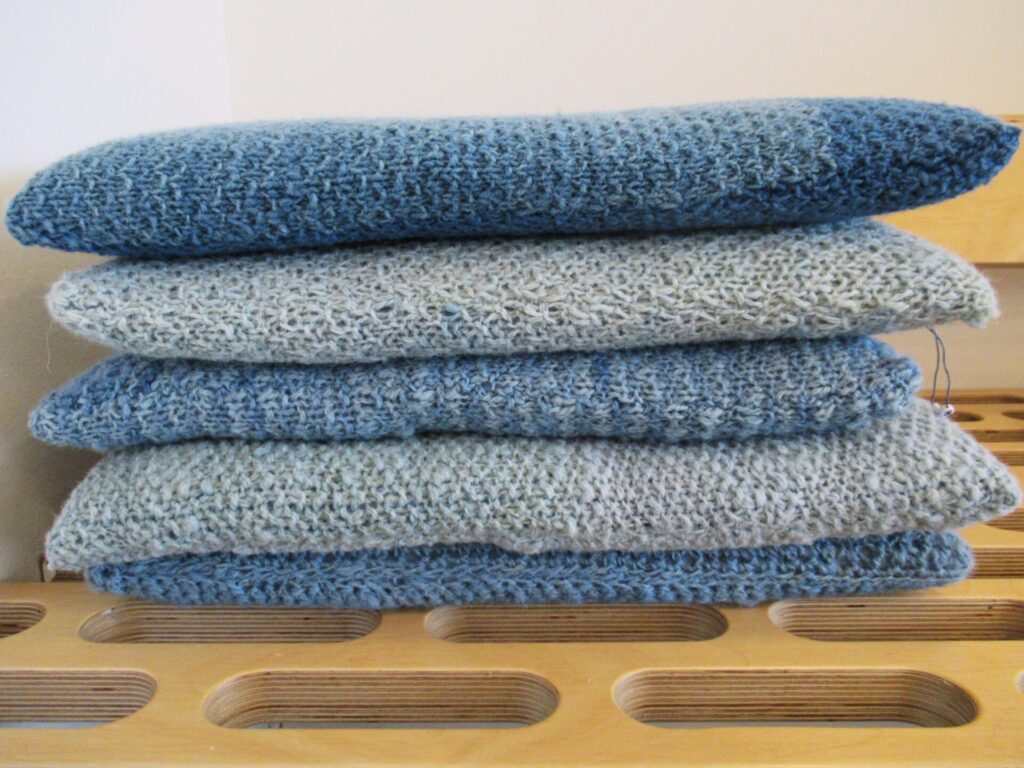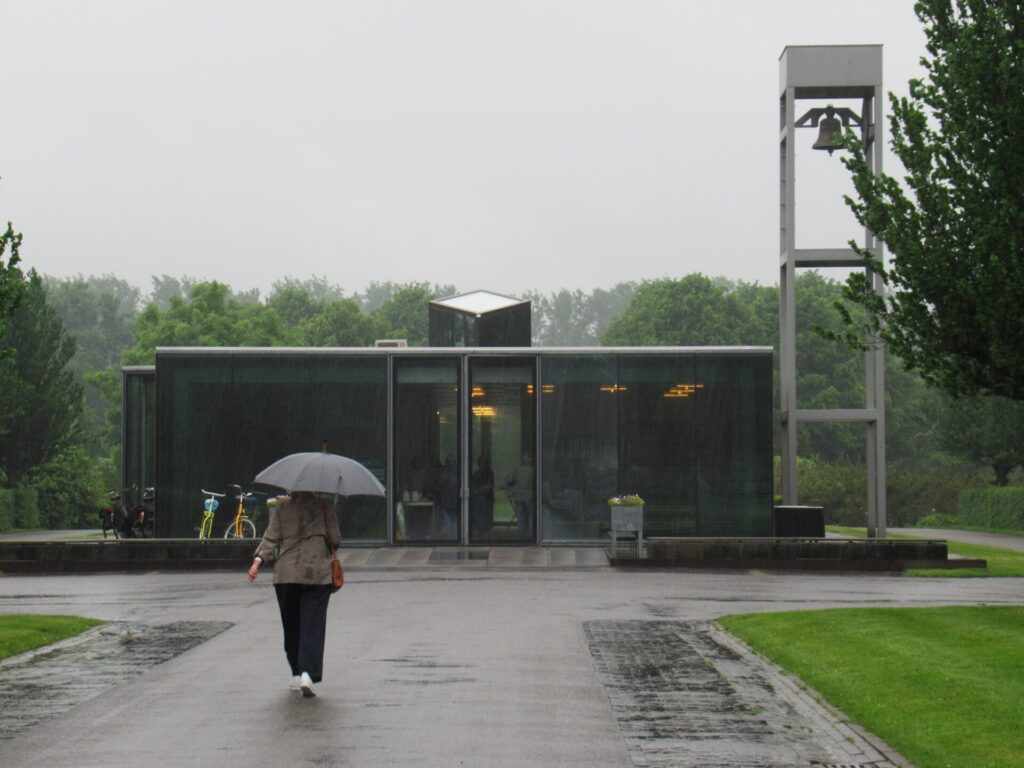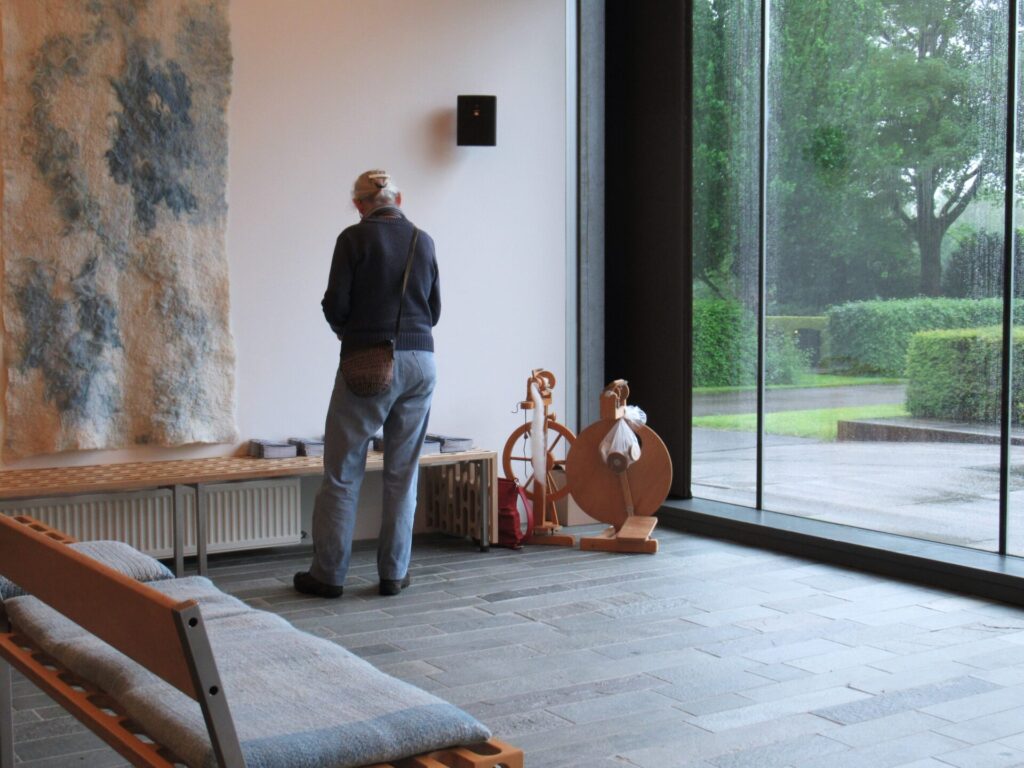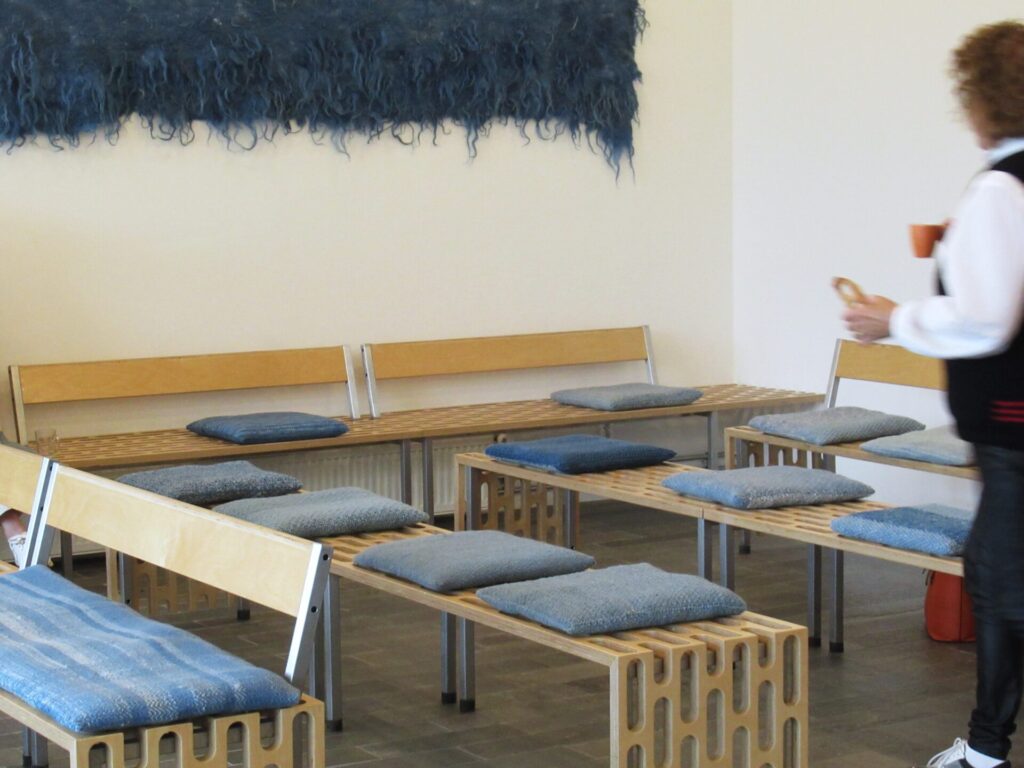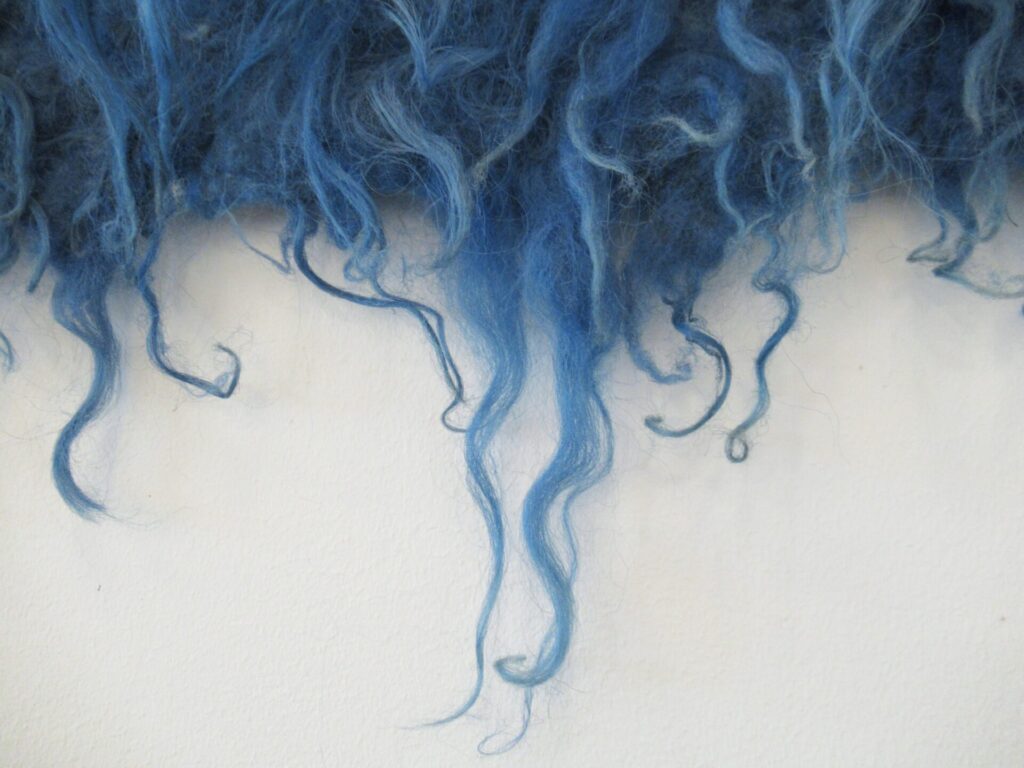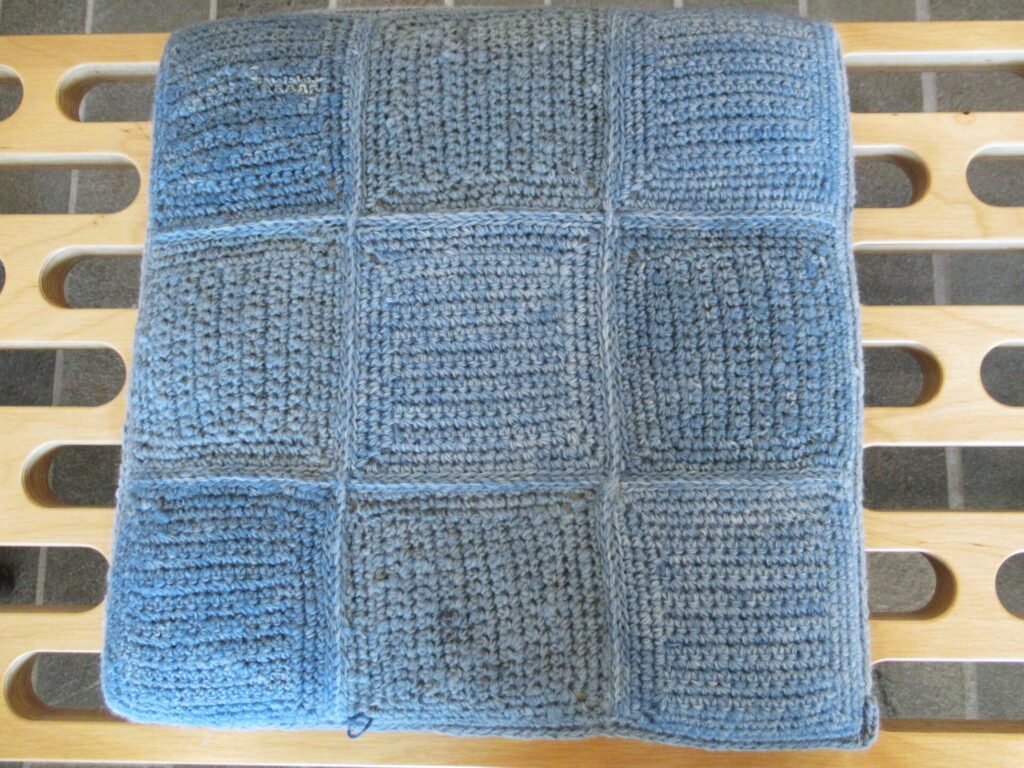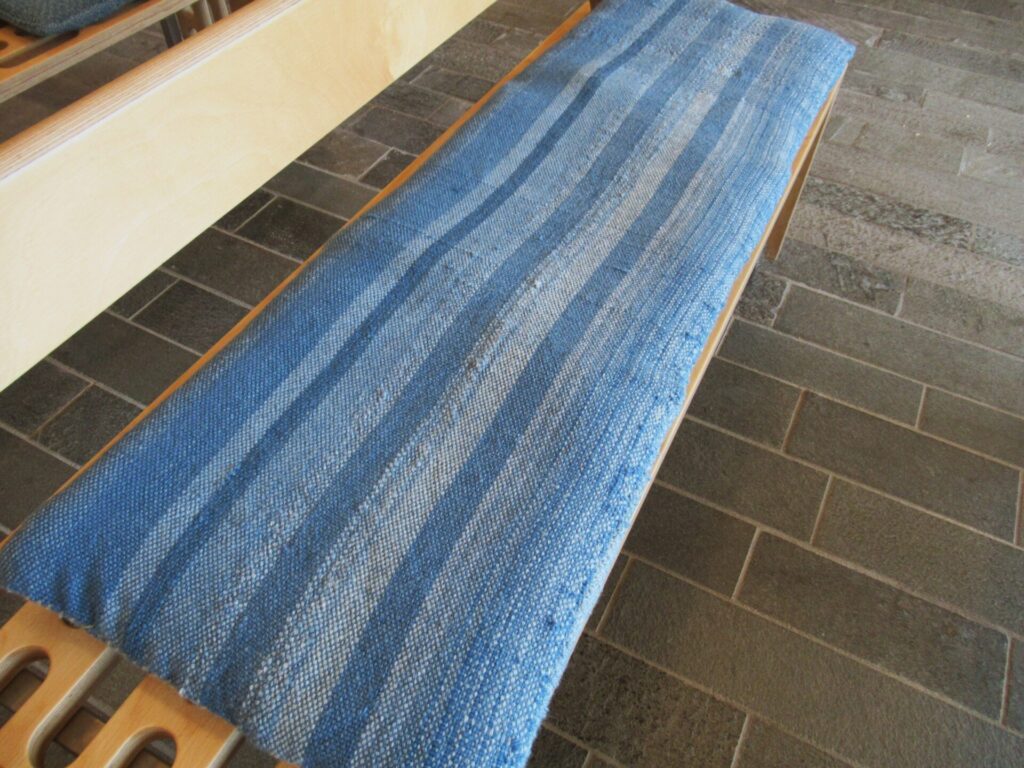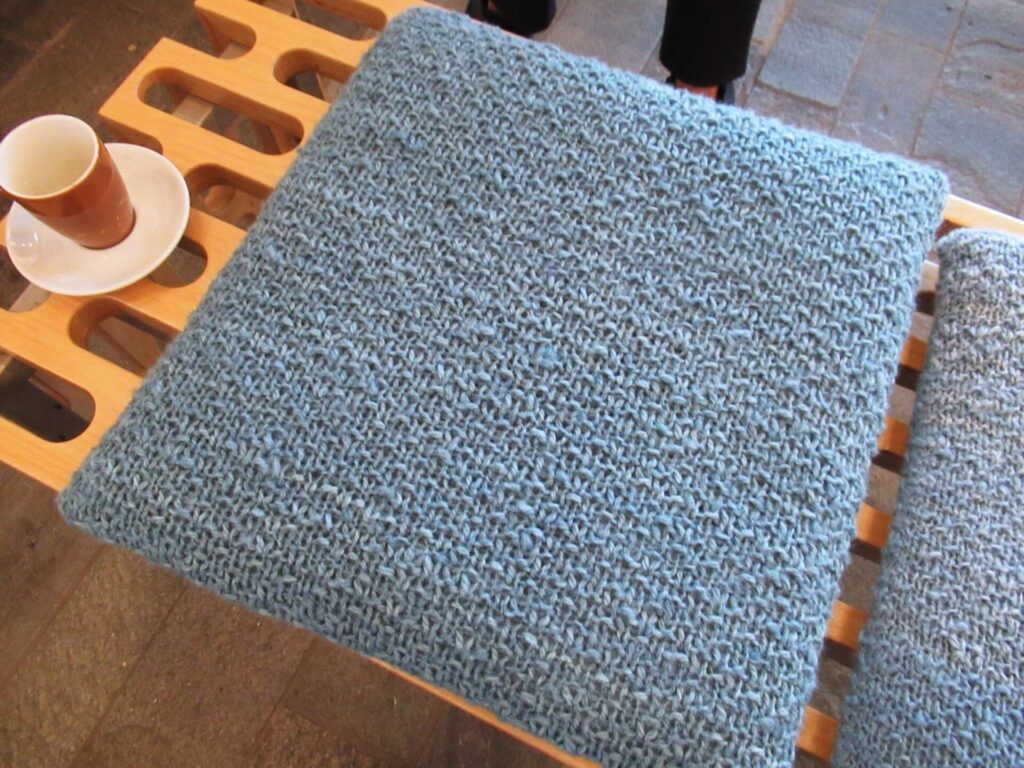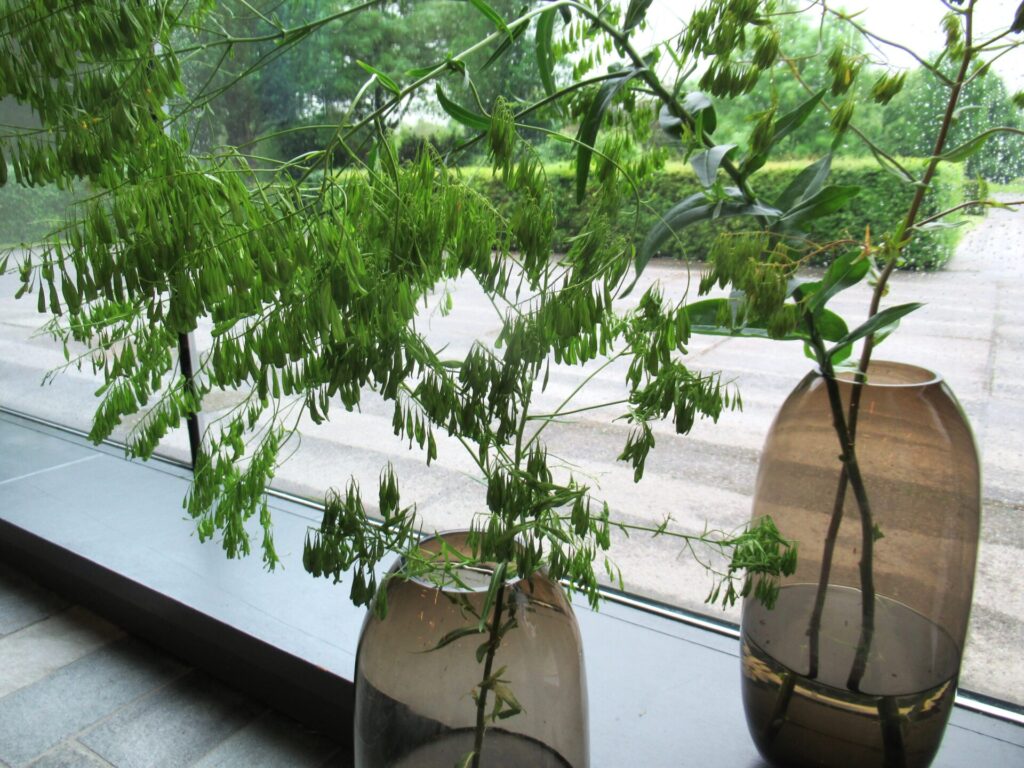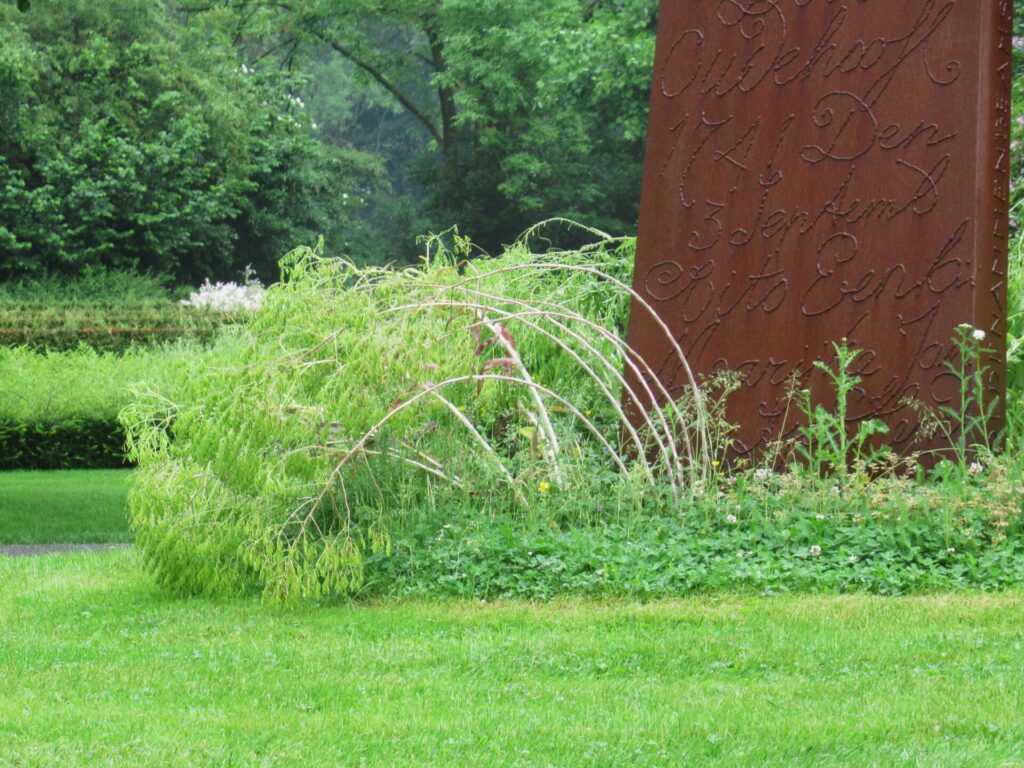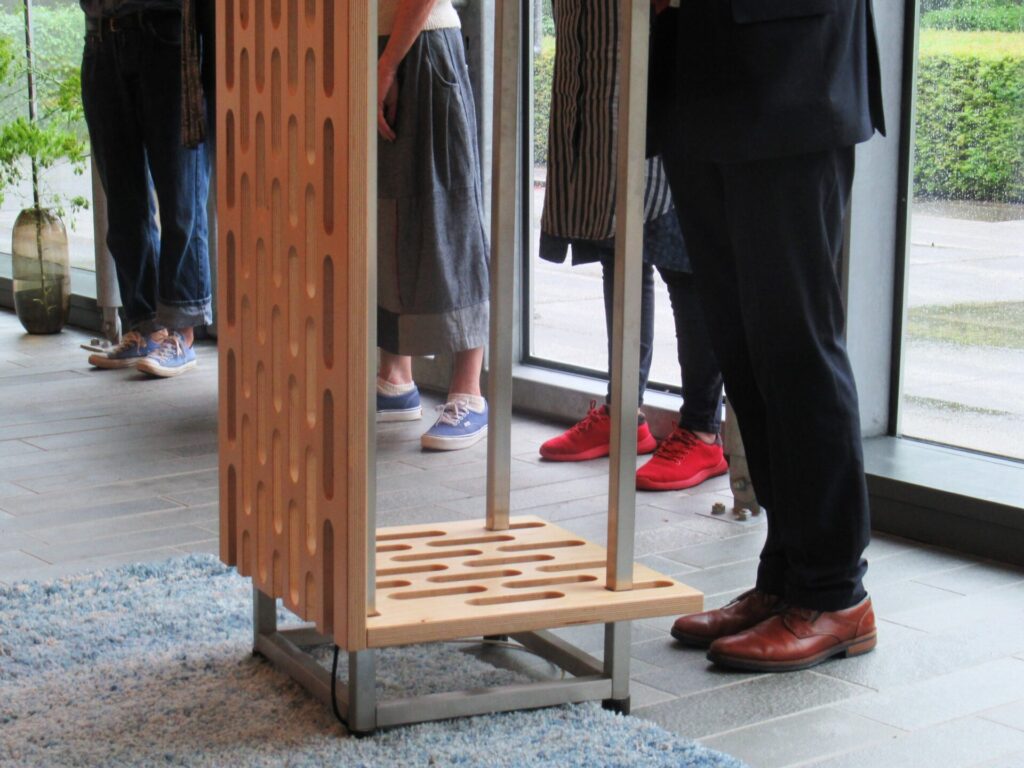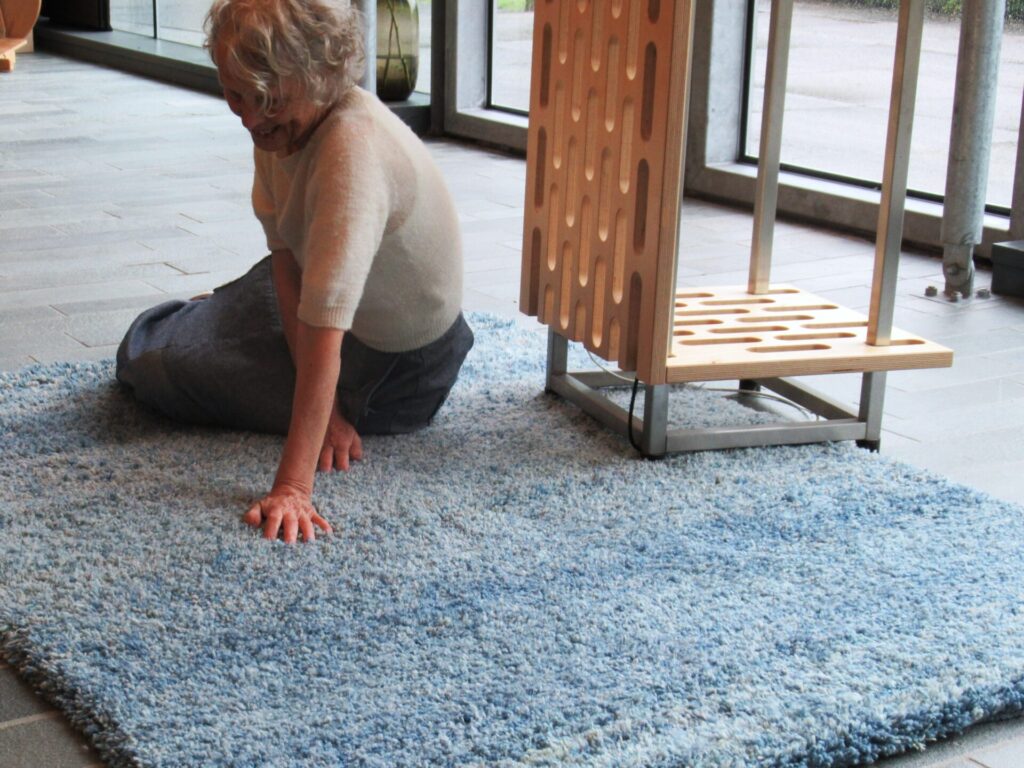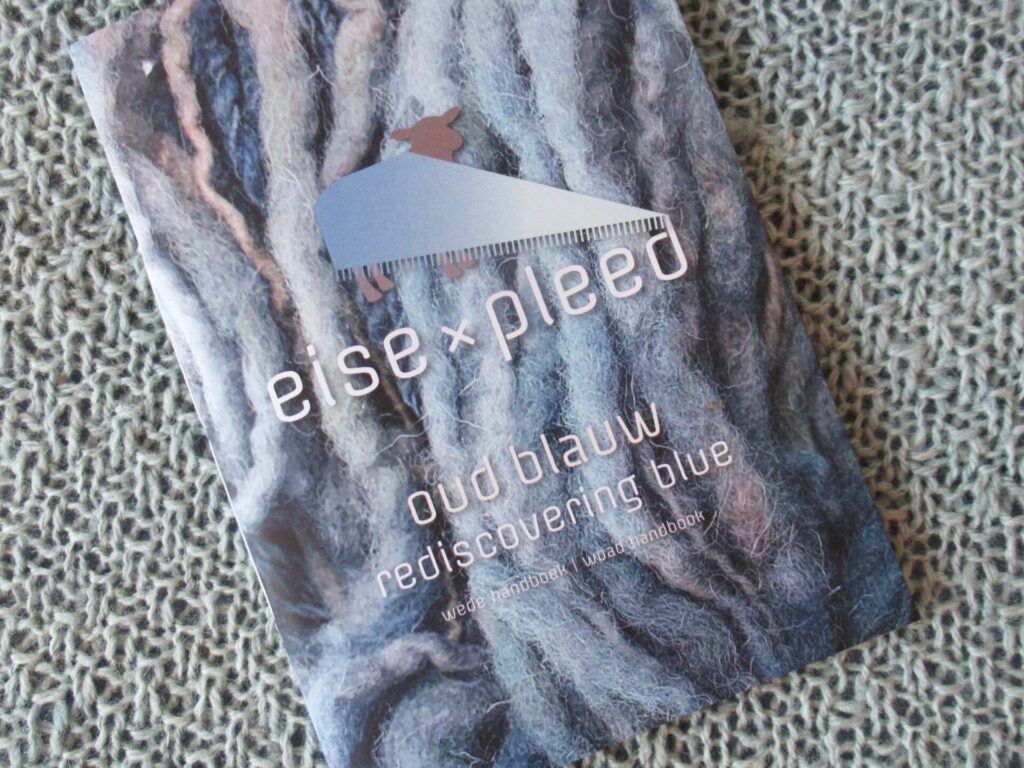Dyeing
Woad Handbook
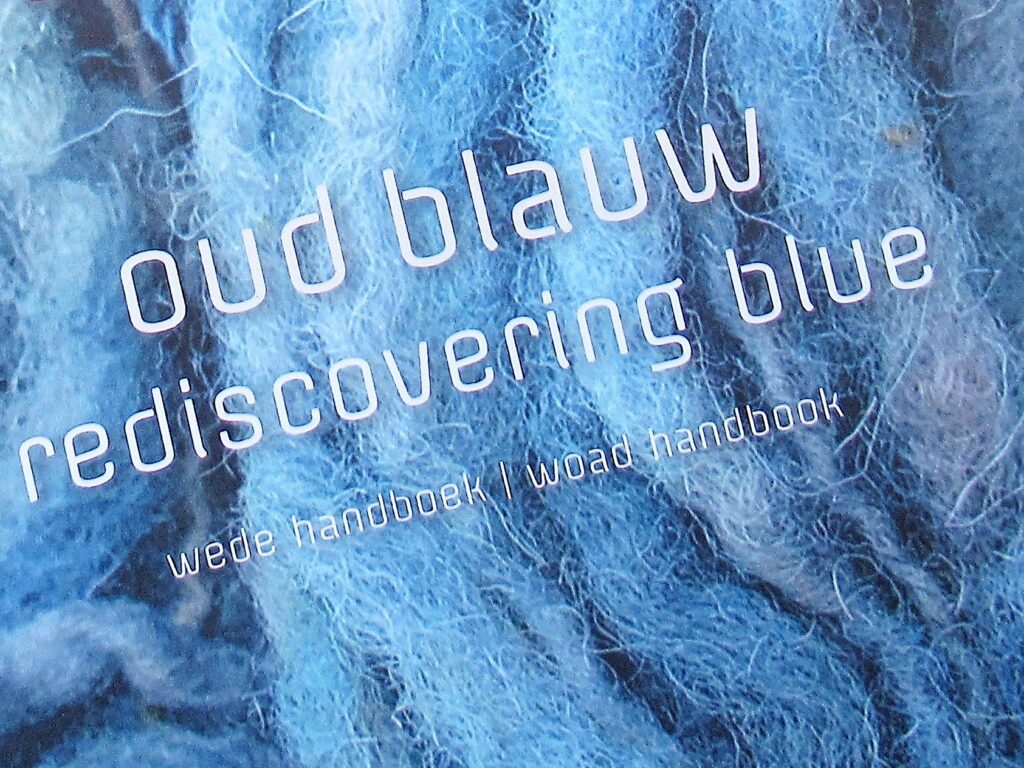
Hello!
There is no knitting to show you at the moment, I’m afraid. I’m busy writing up a new pattern and finishing a small and hopefully fun project from sock yarn leftovers that I hope to share with you soon. Until then, I thought I’d write about the Woad Handbook I’ve recently read. (For any of you who have missed my earlier posts about it here and here, woad is a dye plant that gives beautiful shades of blue.)
The word ‘handbook’ suggests a hefty tome, but Oud blauw: wede handboek/Rediscovering Blue: Woad Handbook is, in fact, a slender 15 x 21 cm/6 x 8” booklet.
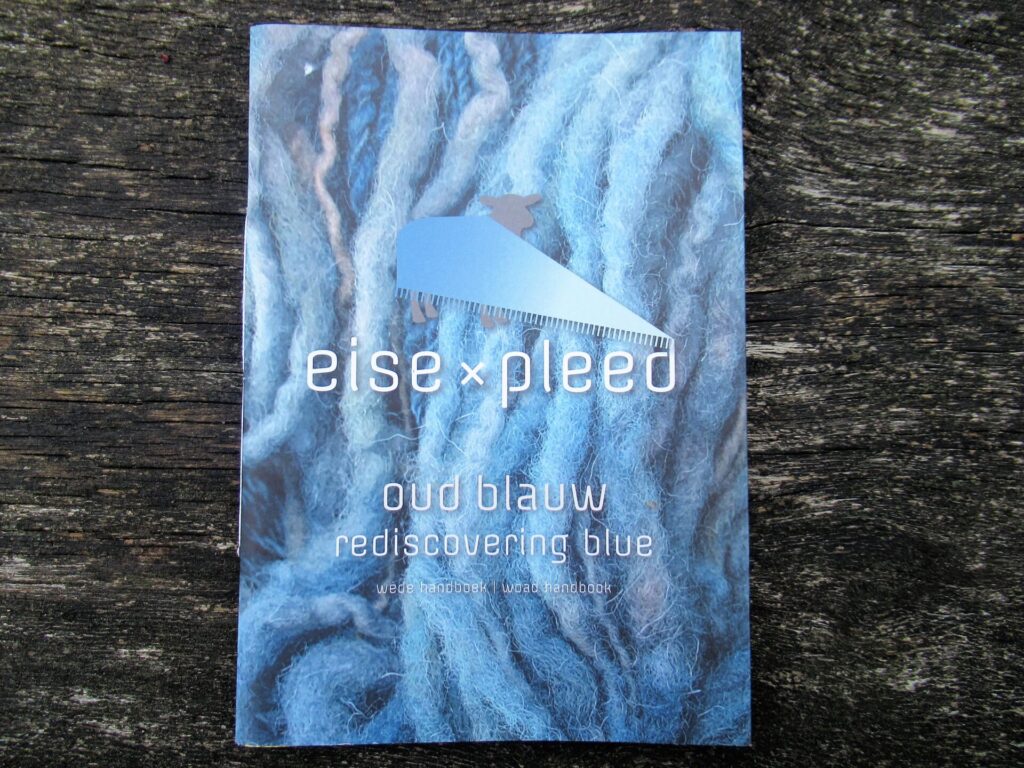
Despite its small size, it really is a complete handbook. In both Dutch and English it covers everything from a brief history of woad dyeing, to instructions for growing and using woad.
The booklet also tells us about Eise Eisinga, an 18th Century Frisian wool-comber, who didn’t just comb wool, but also traded in it and dyed it. This very interesting person, who as a hobby built an amazing planetarium, has left us his notebooks including his woad recipes. It is fun to try and decipher his handwriting in the fragment that is included in the booklet. The words blau (blue) and Indigo immediately jump out.
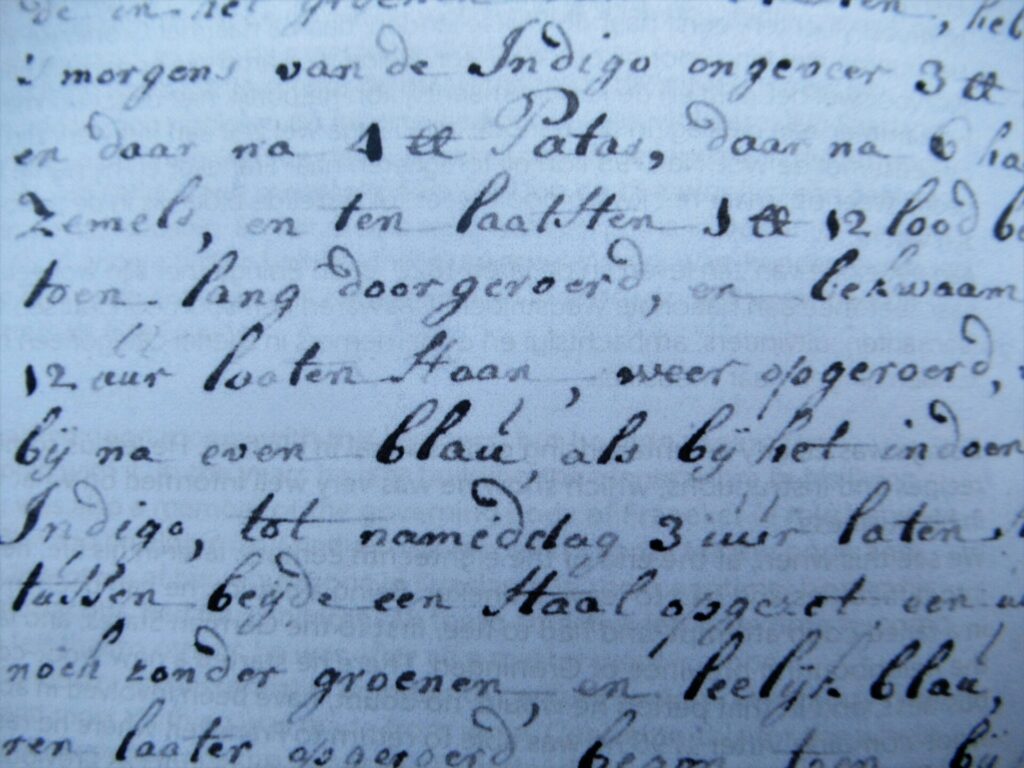
Even for people like me, who do not intend to do a lot of woad dyeing, it is an interesting read. And for me just looking at a page with yarn samples of the authors’ dyeing experiments makes the booklet worth having.
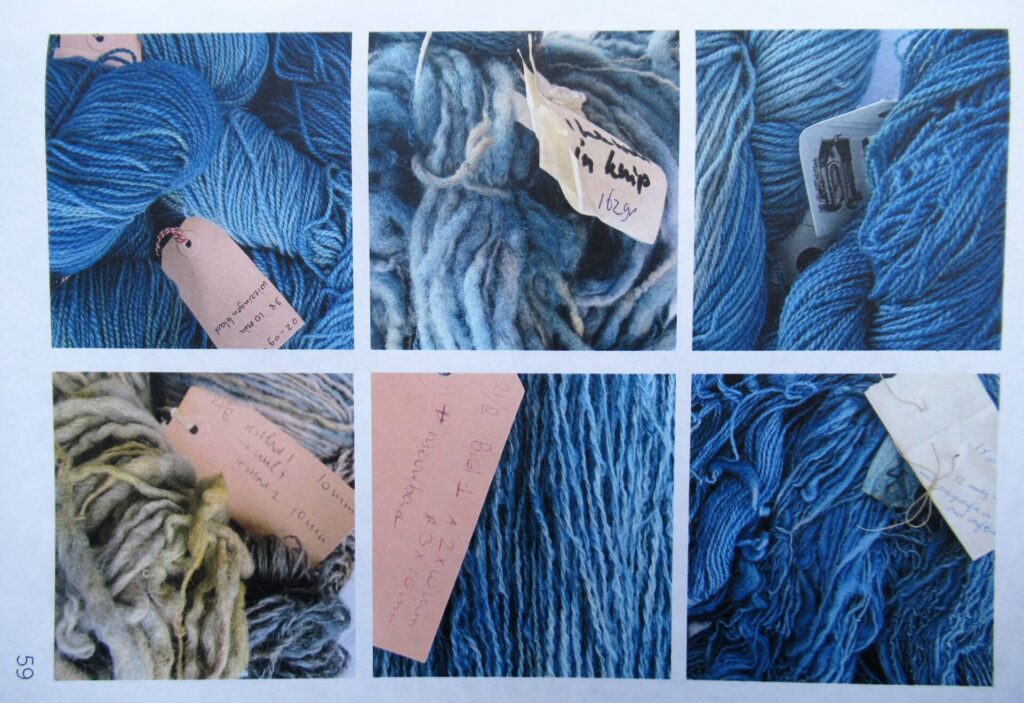
This woad booklet is part of the Pleed (pronounced as and meaning plaid) initiative, a community project aimed at using local wool to make things instead of treating it as waste and… well, this is what they stand for in their own words:
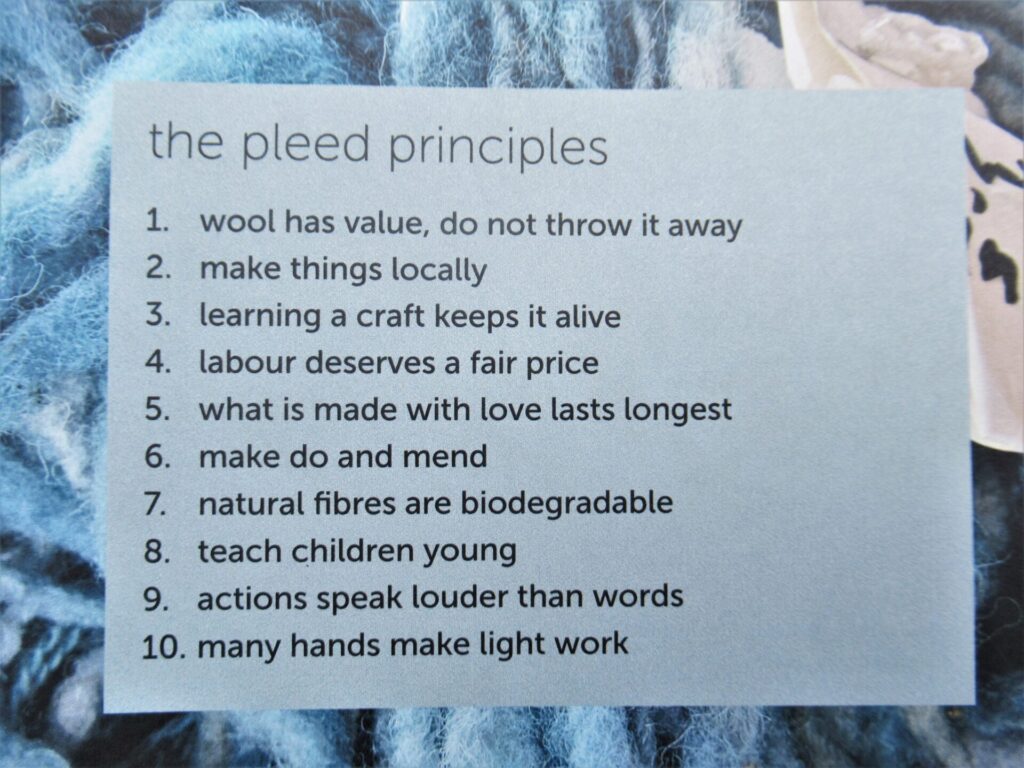
My attempt at growing woad wasn’t very successful in the first year. Slugs ate most of the leaves that should have been used in a dye vat. In the second year, the plants unexpectedly flourished and flowered profusely.
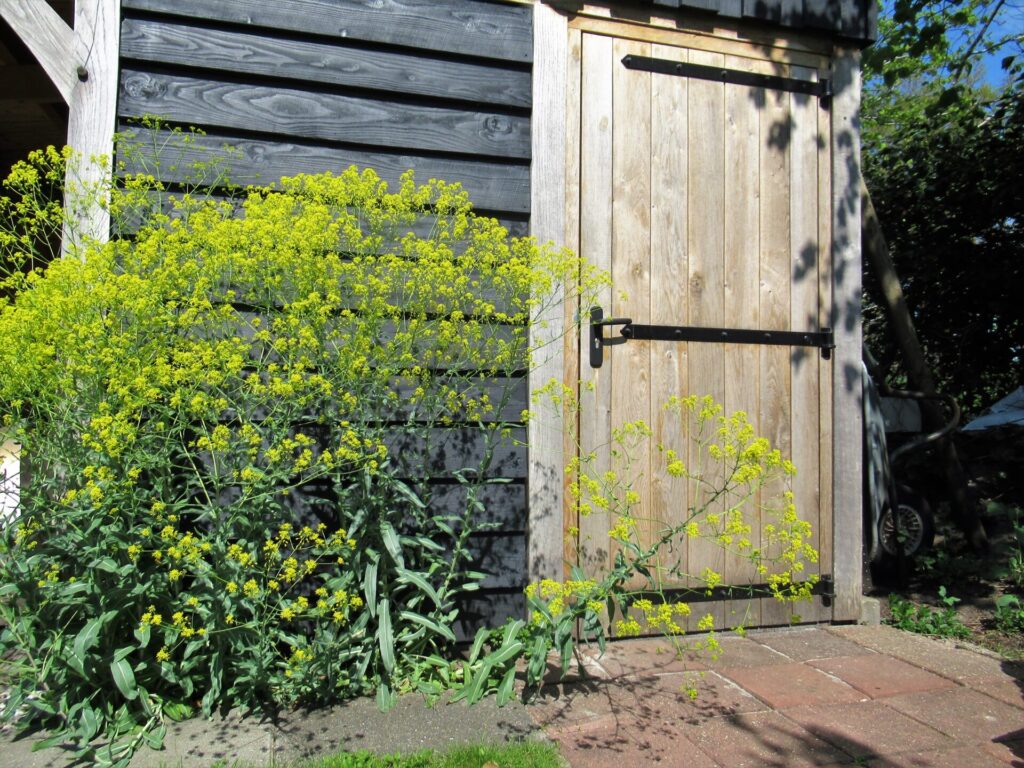
Unfortunately the plants do not contain any usable pigment at this stage. It is a biennial plant and only the first-year leaves can be used for dyeing. Never mind, at least I learnt a lot about woad and I will now recognize the plant anywhere. It looks very similar to (and is related to) oil-seed rape, only the leaves have a different shape and the flowers are finer.

My plants are now setting seed. A lot of it.
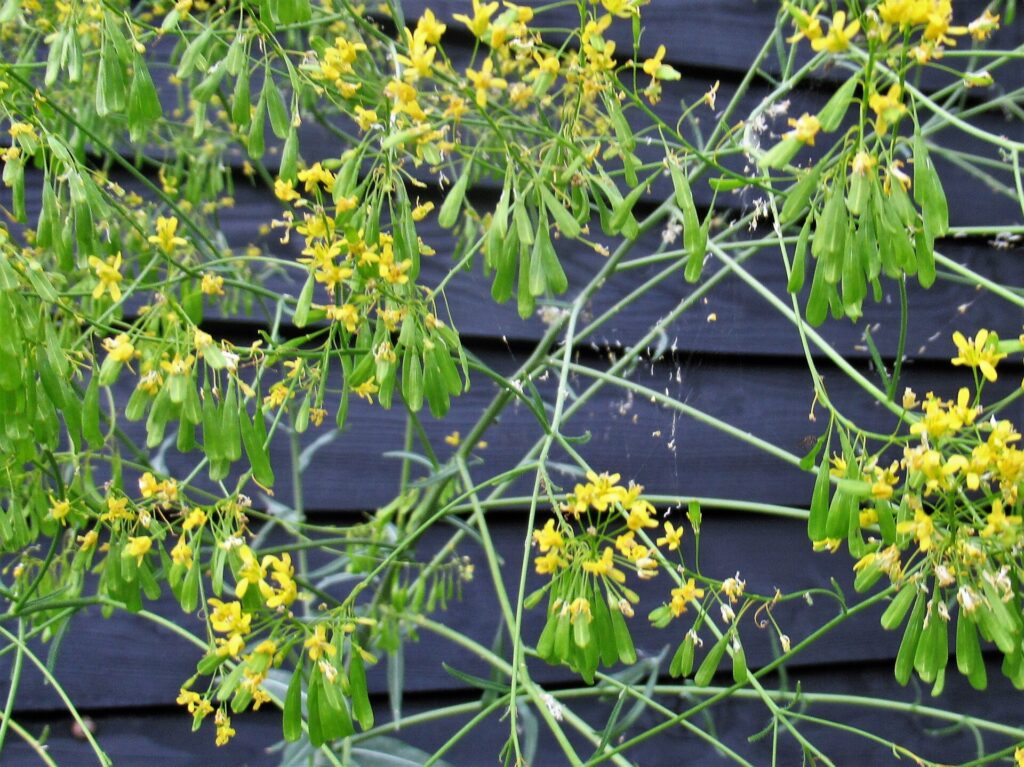
I could grow acres of woad plants with all those seeds, only I don’t have acres. I’ve heard that the seeds can also be used for dyeing. That might be worth looking into.
The Woad Handbook can be ordered through the Pleed website here (scroll down for an e-mail form). The Pleed people are also organizing an exhibition about the history and future of Dutch wool at the Frisian Agricultural Museum. Information about the exhibition 100% wol can be found here (again, please scroll down). Don’t despair if you live too far away – I hope to visit and write about it sometime during the summer.
Here are a few other links for anyone interested in woad:
- Bleu de Lectoure – French woad producers’ website with interesting background information and videos.
- All about Woad – British website telling us… all about woad.
- Swedish article about dyeing with woad.
- Wearing woad – a Canadian natural dyer’s website about sustainable clothing and dyeing, with woad in particular.
- Article about growing woad in the US on the website of Spin Off magazine.
I hope this was interesting even for non-dyers. If all goes according to plan, I’ll be back with a small gift for you next week. Hope to see you then!
Woad Adventures
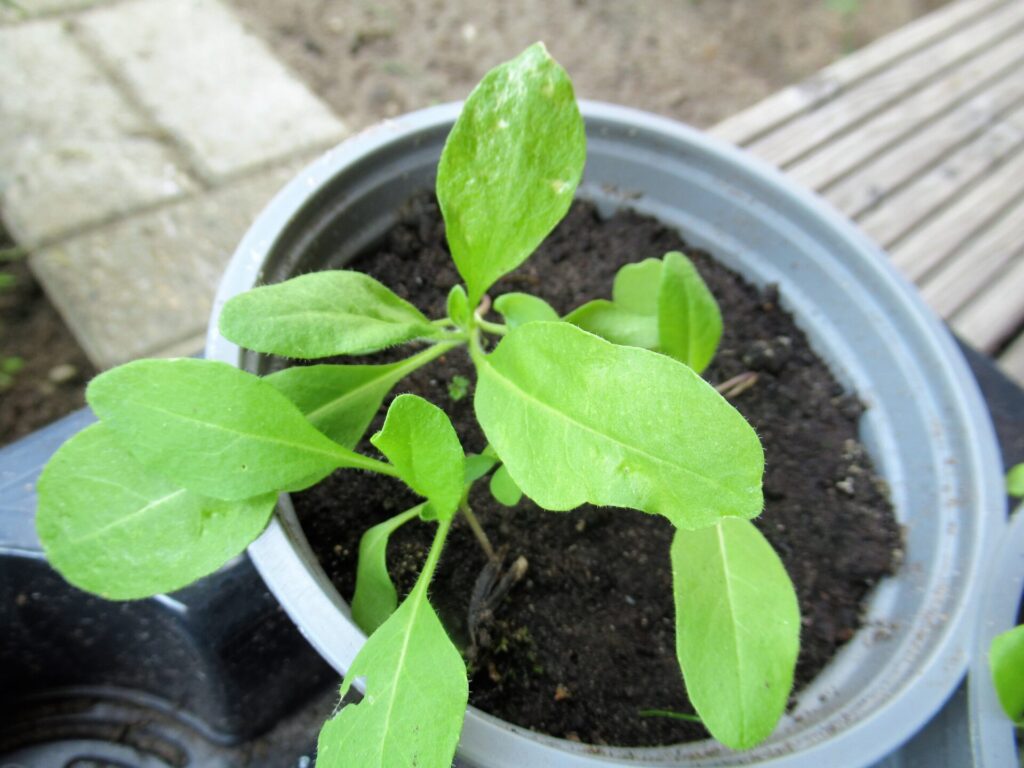
Hello!
Remember the woad seeds I sowed in June? I received them as part of a project aimed at using more local wool and dyeing it with local dye stuffs too. That seemed like an interesting idea and woad can give a beautiful blue colour, so I thought I’d give it a try on a small scale.
Now, 3 months after the start of my woad adventure, it’s high time for an update. It’s not all good news I’m afraid. At first everything went well. Most of the seeds germinated and I had a number of really healthy looking plants (photo above). I planted them out around mid-July. Half of them in a sunny spot next to our garden shed, and the other half behind a big rose bush.
Below you can see the plants several days after planting them out. Already, things were not looking good at all.
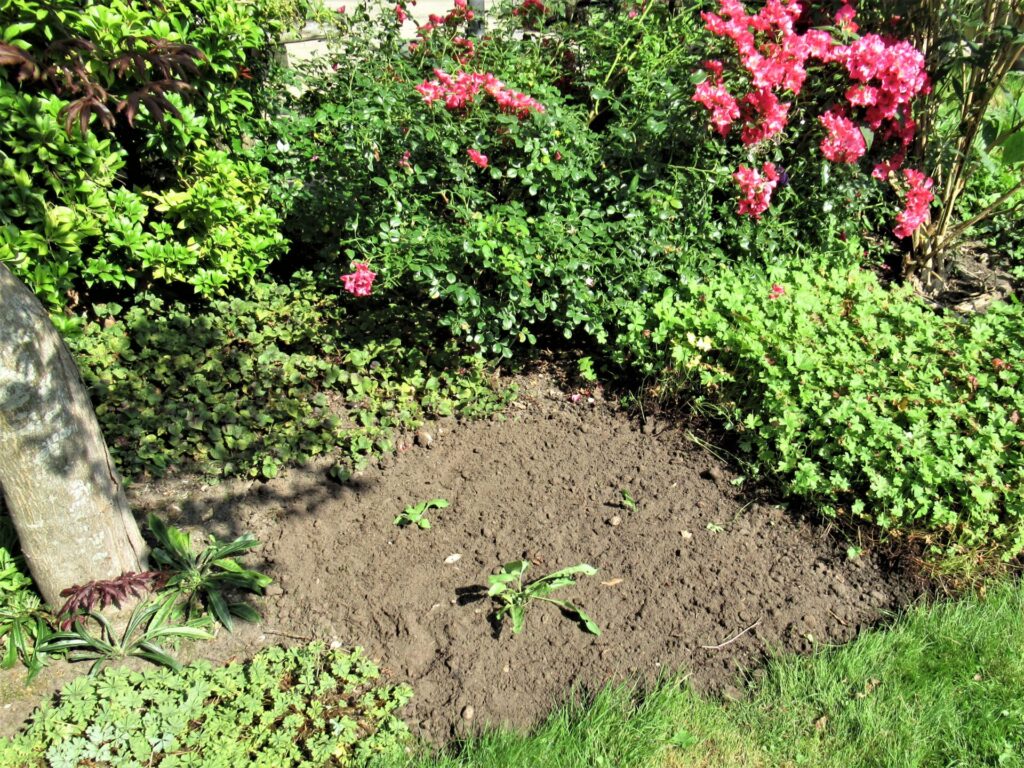
Some of the plants were still sort of okay, some had almost disappeared. Uh-oh! Rainy weather = slug weather!
Several years back, we emigrated large numbers of slugs from our garden. We (read: my husband) collected them with BBQ tongs, put them in a bucket with a layer of water and emptied the bucket on a piece of land where the slugs wouldn’t bother anyone and would be much happier (or so we told ourselves.)
We soon learnt that the bucket shouldn’t be left standing for too long or the slugs would crawl out. Ieuw!
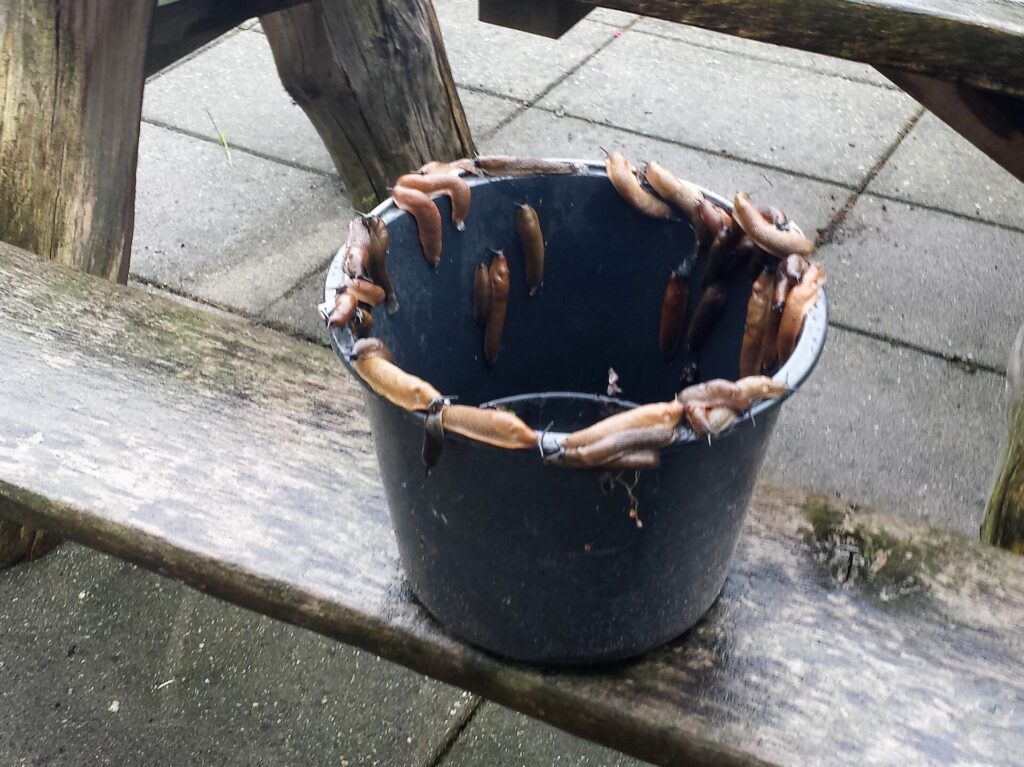
Maybe we should have mounted another slug removal campaign this year, but we didn’t. And the result is that now, 2 months after I planted them out, one woad plant looks reasonably okay.
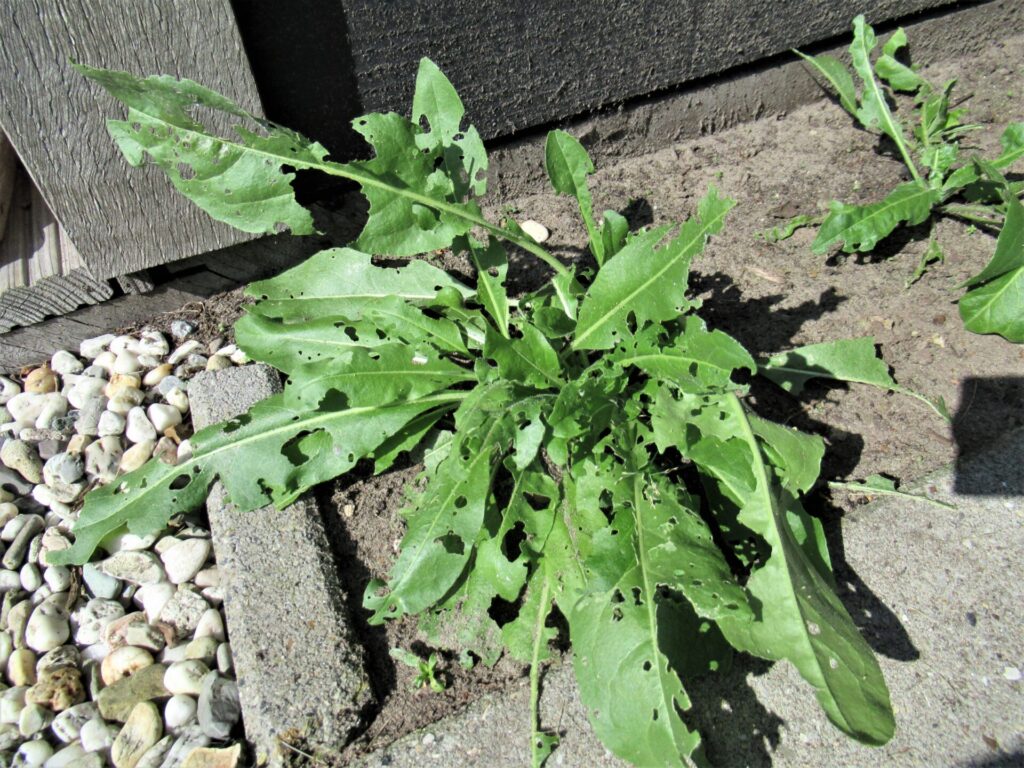
One has disappeared completely. And the rest looks… well, see for yourself:
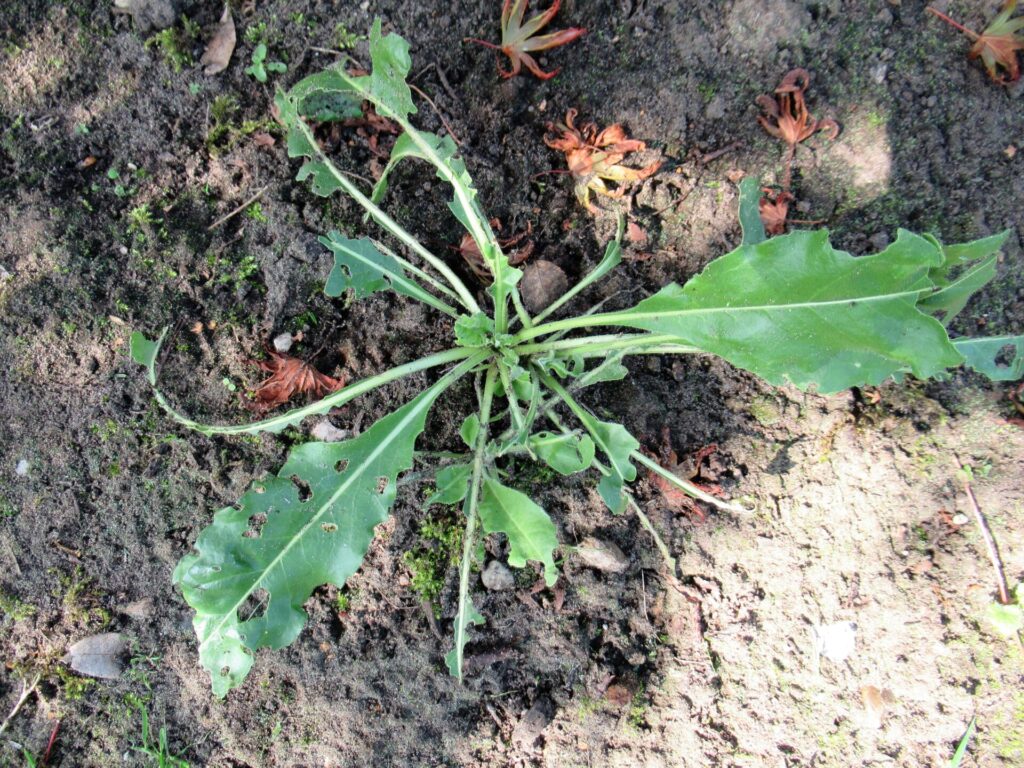
I recently learnt that only fresh woad leaves from the first year’s growth can be used. Dried and older leaves do not give off any colour. I also found out that at least 250 g/½ lb of fresh leaves are needed for a 9 litre/2 gallon dye vat. Even if my plants had thrived, I wouldn’t have come close to that, but that was never the plan.
The plan was that small woad growers like me would bring their 10 or 20 grams of fresh leaves to a stall at a wool event, where together they would make a great dye vat. Unfortunately the wool event was cancelled because of Covid-restrictions. Oh well, that’s life at the moment. At least it’s been an interesting experiment. The dyers have found enough leaves for their vat elsewhere and I now know a lot more about woad.
Meanwhile I have started spinning the lovely blue-and-green merinowool-and-silk gifted to me by a friend. She gave me two batches of spinning fibre of 100 grams each.
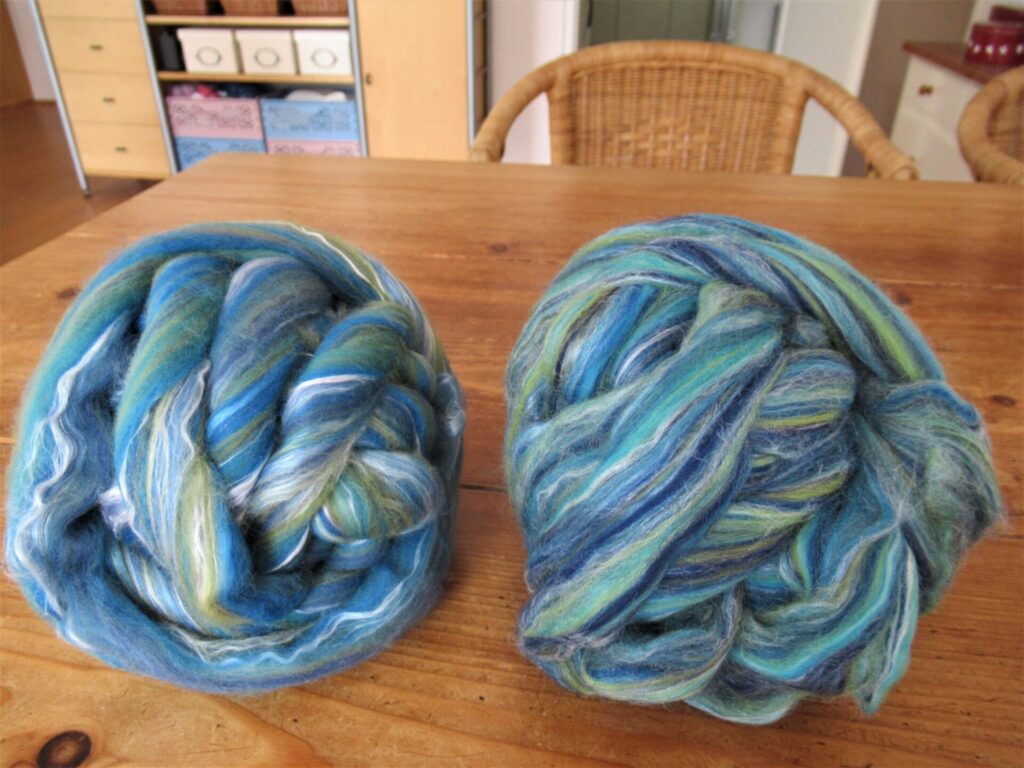
When I took them out of their bags, I noticed that although they were the same colourway, they were very different, like two balls of yarn from different dye lots. Can you see it?
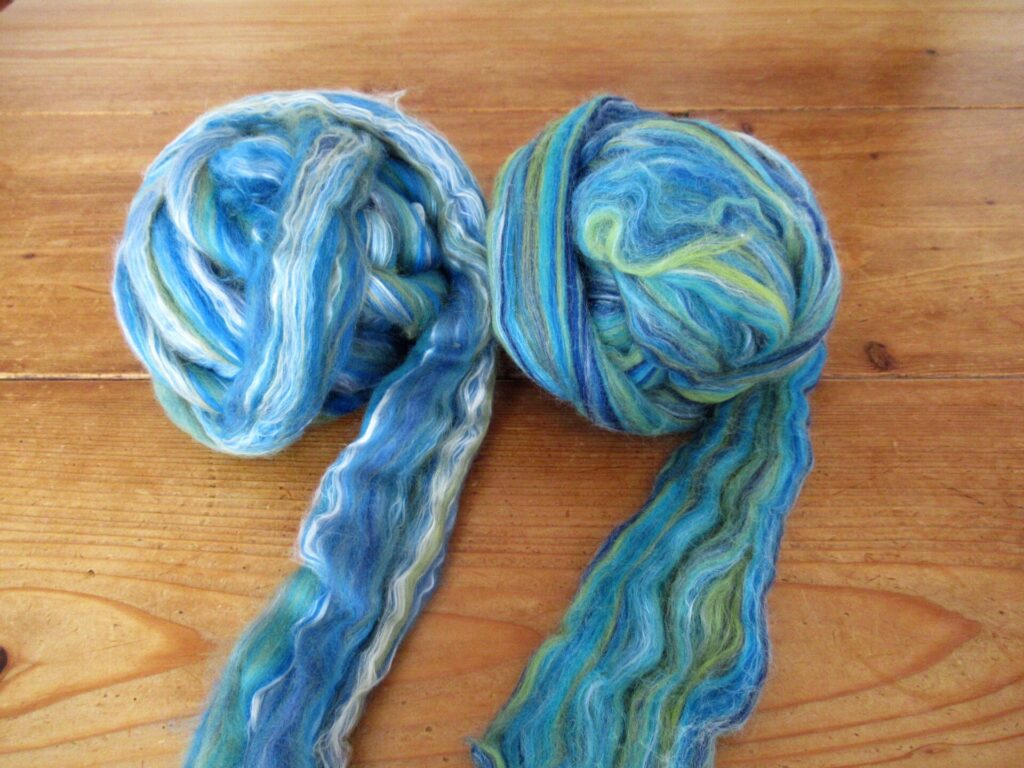
To solve the problem, I spin small portions from the two batches alternately. The result is a beautiful blend of blue, green, white and turquoise with the various colours still distinguishable.
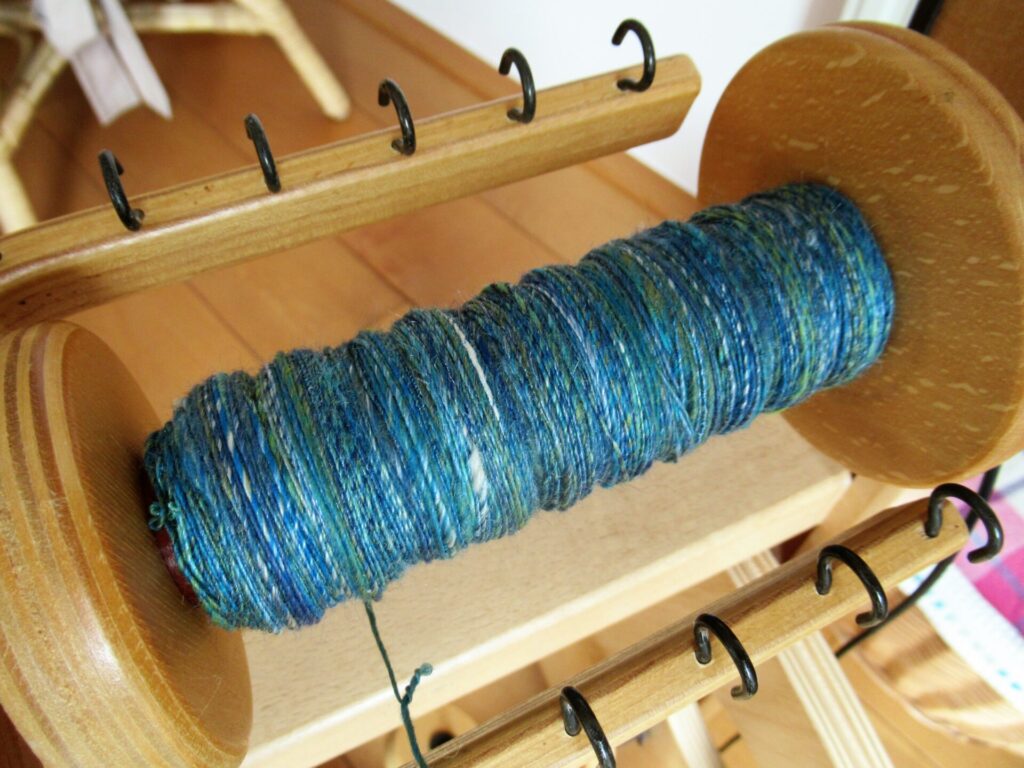
Spinning it is like having a piece of mermaid’s tail in my hands. Not just because of the shimmery blues and greens, but also because it’s slippery. That is why I am spinning the fibre ‘from the fold’ as it is called. Some people hold a ‘fold’ of slippery fibres like these folded between their fingers, but I prefer wrapping it around my thumb.
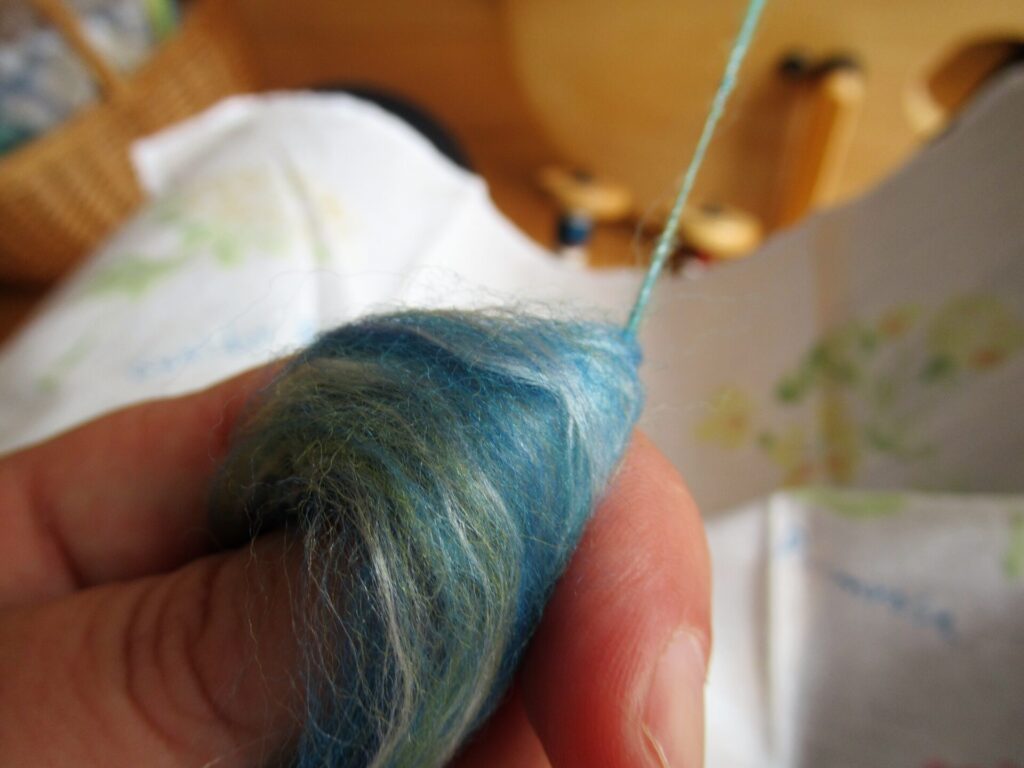
Spinning it like this, gives me more control over the fibre.
Spun up and plied, the 200 grams would be enough for a good size shawl, but I’ve decided to spin it out to enough for a sweater by combining it with something else – 600 grams of wool in a colourway called… (drum roll)… WOAD!
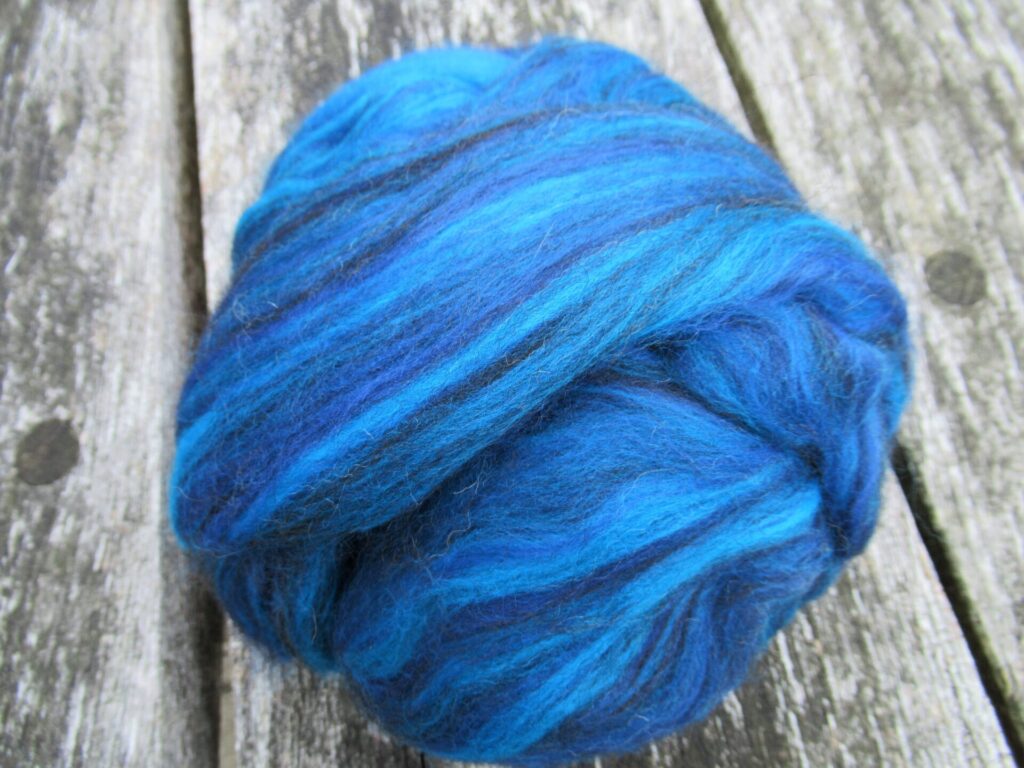
This, too, consists of various shades: black, cobalt and turquoise. A sea of blues to go with the mermaid’s tail.
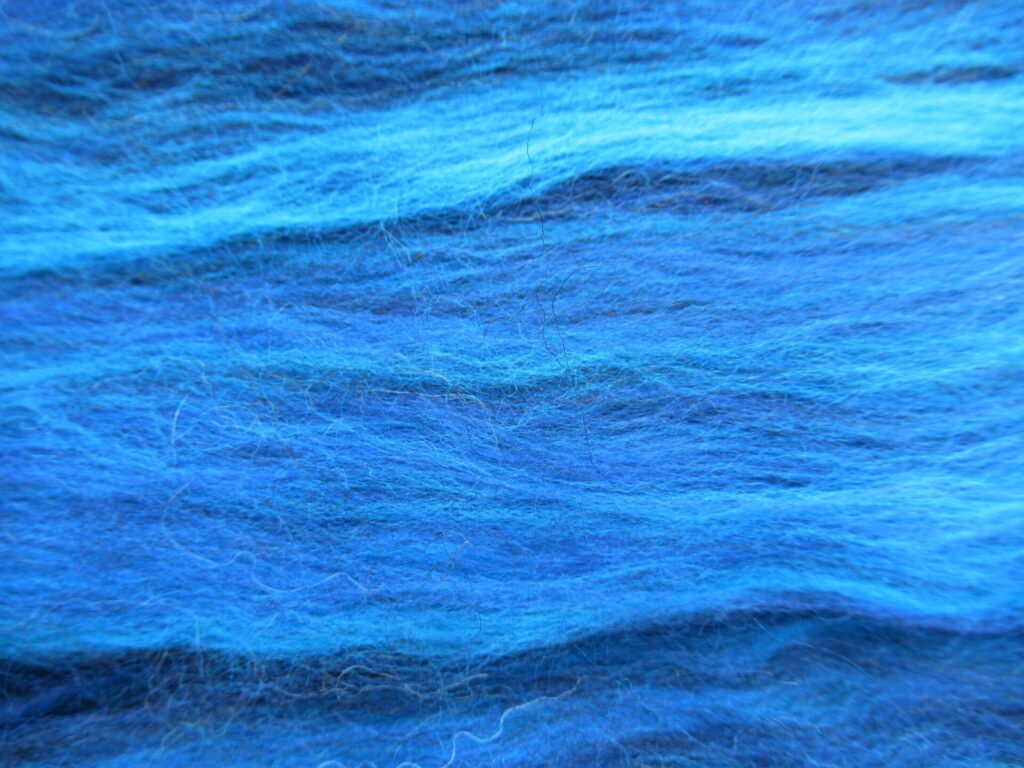
But unlike the mermaid’s tail fibres, the different shades can no longer be distinguished when this wool is spun. Everything blends together into a beautiful deep but not very dark blue. I’ve tried a little bit out.
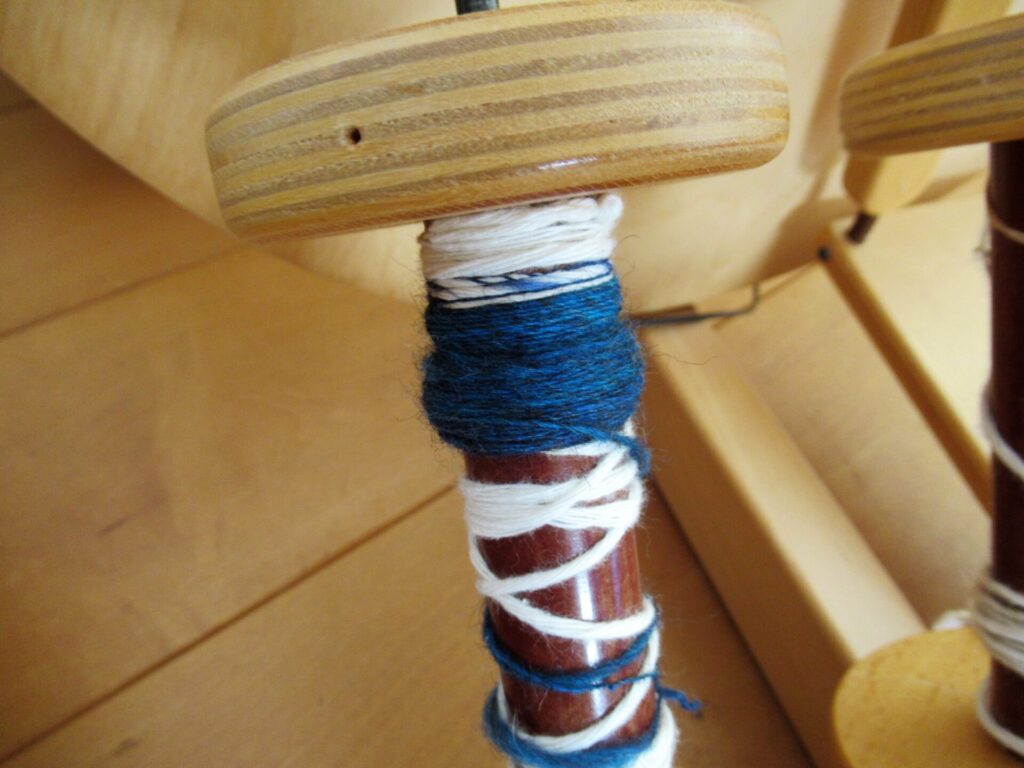
This wool (a blend of Zwartbles and organically farmed Merino) is not dyed with woad, but the colour is similar to what can be achieved with woad (if the slugs leave some).
This woad adventure (the whole process of spinning, plying and knitting up this mountain of fibre) is going to take a long time, I expect. Especially because I also have many other projects on the go. I’ll show you my progress when there is something worth showing. But first more about some of my other projects over the coming weeks. Bye for now! xxx
PS More info about the local wool & woad project can be found in this blog post.
Sowing Woad
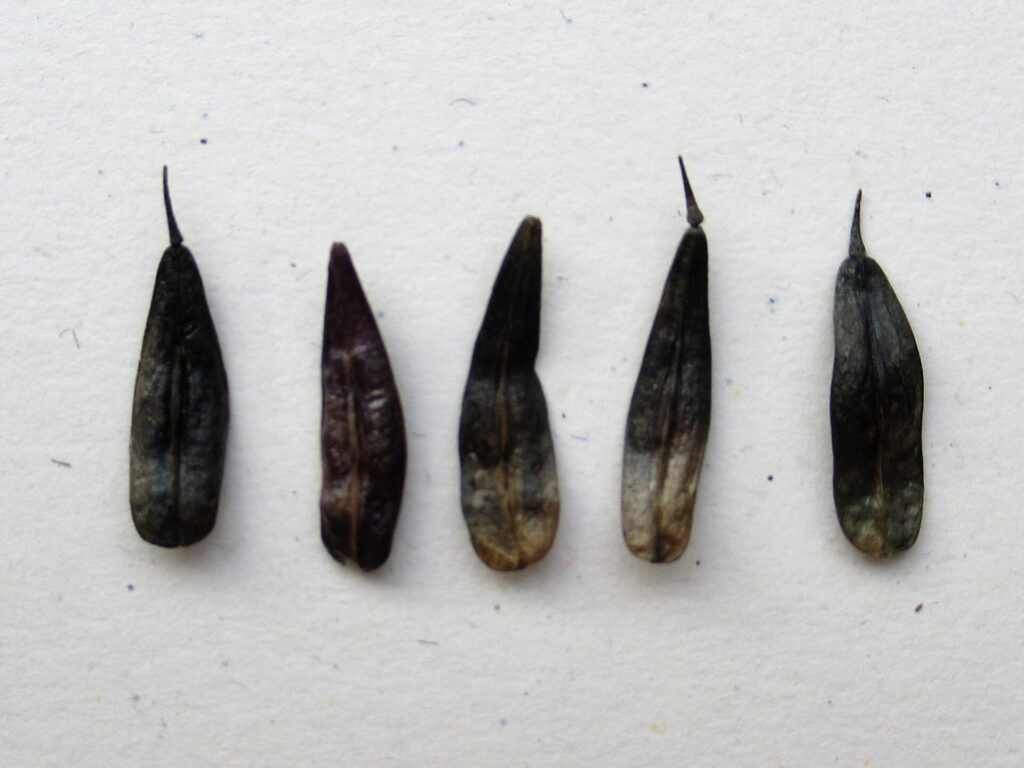
‘Urgent: Woad Growers Wanted’, a newsletter that landed in my inbox said. At first I thought, ‘Go away, I’m too busy.’ But after a while I thought, ‘Oh, why not? It sounds really interesting, and it won’t take any time at all!’ So I answered that I’d like to be involved and received a packet of woad seed.
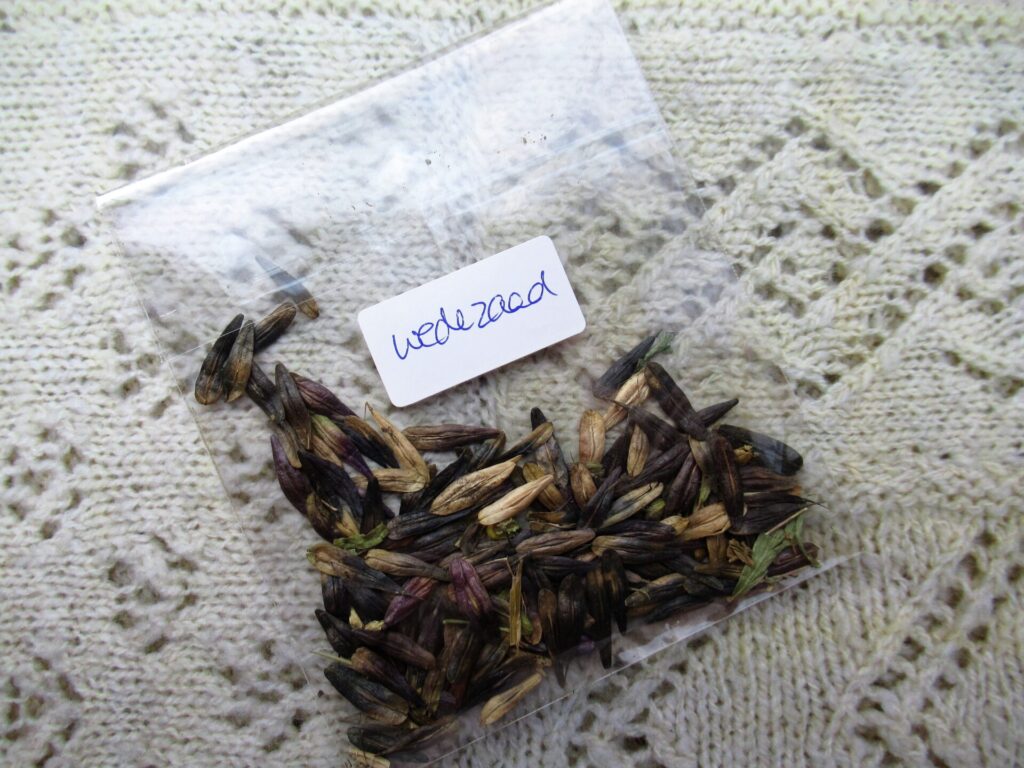
It came with a lovely postcard of a blanket knit from local and hand spun wool. It is one of the blankets that was made last year, as part of a community project aimed at rescuing local wool from being labelled as waste and shipped off to China.
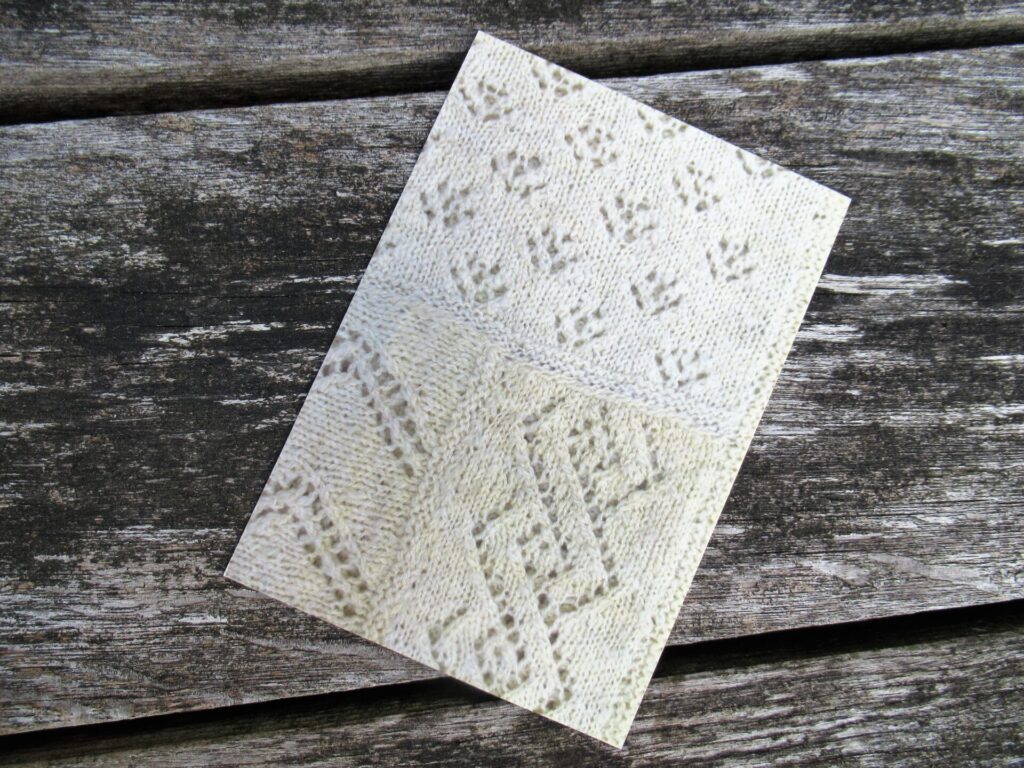
The call for woad growers came from the same people who organized the blanket project. They are now working on more ideas for things to do with local wool, and one of them is dyeing it with locally grown woad.
I won’t pretend to know everything there is to know about woad. In fact, I knew very little about it before I became involved in this project.
From the newsletter, I learnt that for centuries, wool was dyed blue with woad in the Netherlands and other parts of Europe. In the 18th century, Frisian wool comber Eise Eisinga won international awards for his beautiful blue wool. In his spare time, Eise built a planetarium that is now a museum (I knew that, I’ve been to it and it’s great!). The museum still owns his original dye recipes, including one for dyeing with woad.
The seeds themselves vary in colour from pale yellow and green to a deep purplish blue.
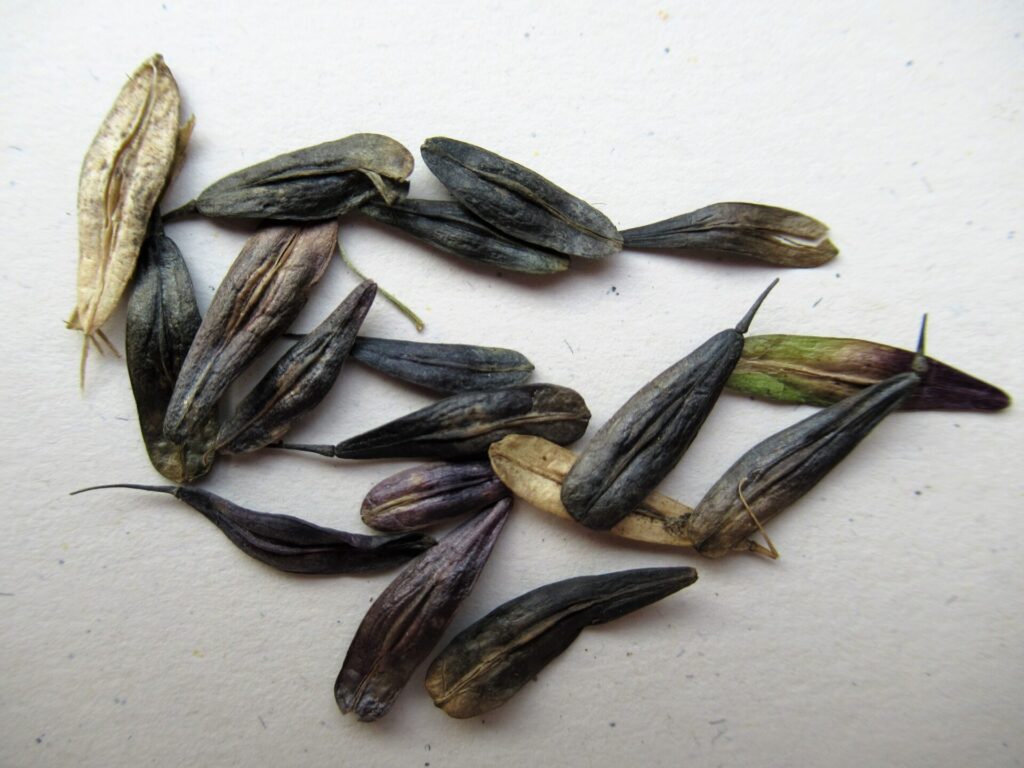
They measure about 2 cm/¾”.
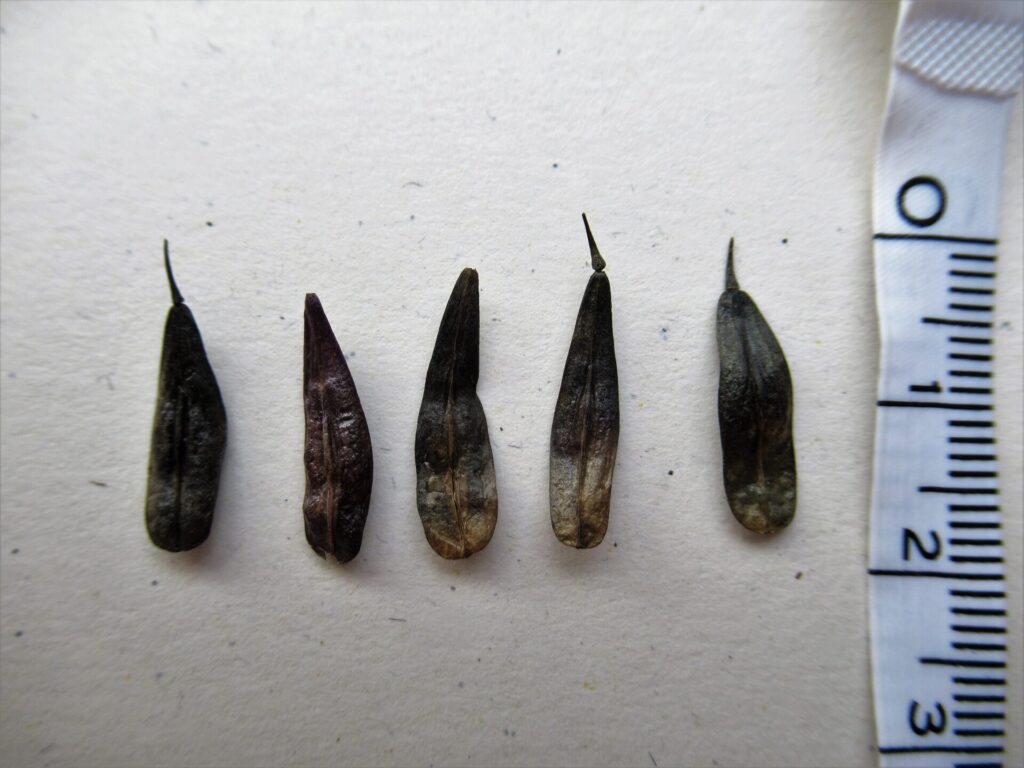
When I thought ‘it won’t take any time at all’ I was kidding myself. When I get involved in a project like this, I can’t just plant a few seeds. I take it seriously, want to do it well, and want to know more than the newsletter tells me. Here are a few things I found out:
- In Latin woad is called Isatis tinctoria. In het Nederlands heet de plant wede, auf Deutsch Färberweid, en Français pastel des teinturier, och på Svenska vejde.
- Tinctoria in a plant name means that the plant can be used for dyeing, as in: Indigofera tinctoria (indigo), Genista tinctoria (dyer’s broom), Cota tinctoria (yellow camomile) etcetera.
- Woad belongs to the brassica family, which also includes broccoli, mustard, cabbages and oilseed rape.
I was going to sow the seeds directly in the garden. But the instructions say that they should be kept moist at all times, so because of the hot and dry weather, I decided to sow them in pots first.
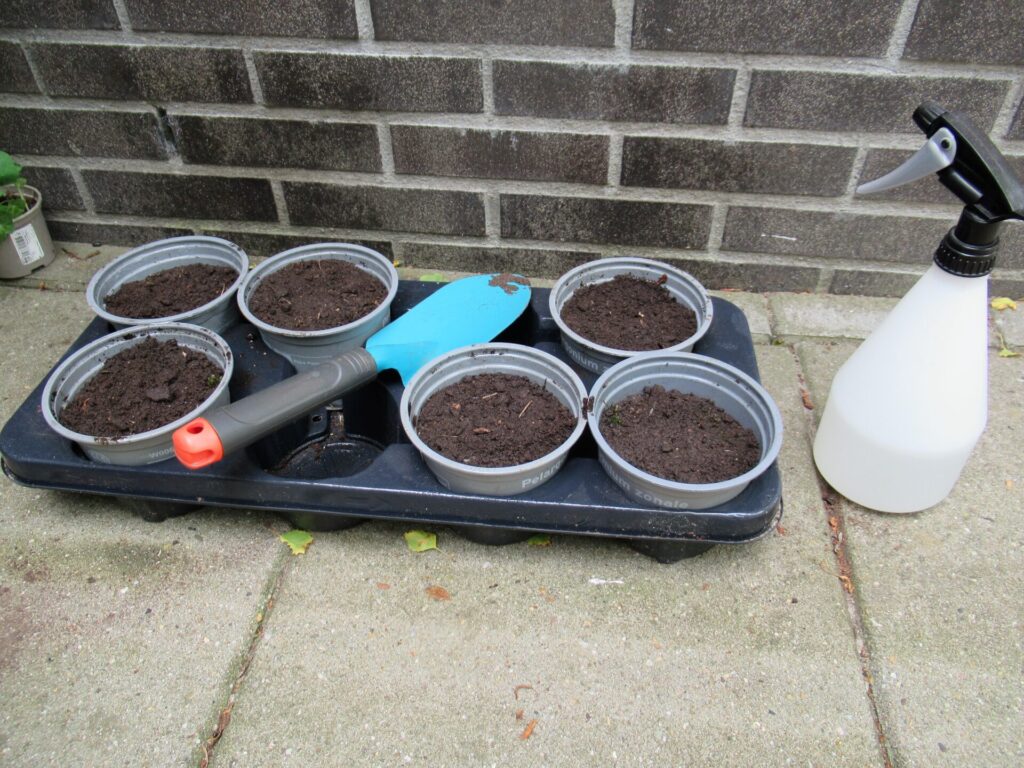
I didn’t use special potting soil, but just dug some soil from the garden, sowed the seeds, covered them with a thin layer of soil, and carefully moistened the soil with a plant sprayer afterwards. Although I placed the pots in the shade, the hot wind had already dried out the soil several hours later. So I spray-misted them again and covered them with plastic.
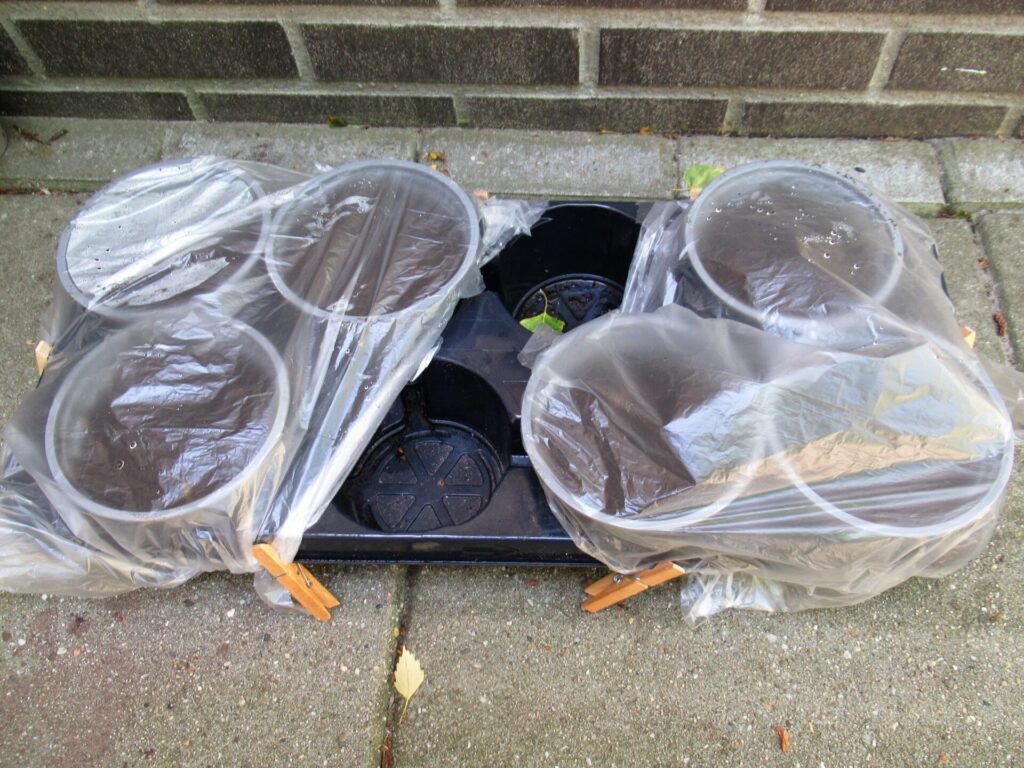
Now, several days later, I’m really glad I planted the seeds in pots. If I hadn’t, they wouldn’t have stood a chance. Some other plants in the garden are already wilting in the heat.
I was sent 1.25 grams of seed and selected some of the plumpest, most promising looking ones.
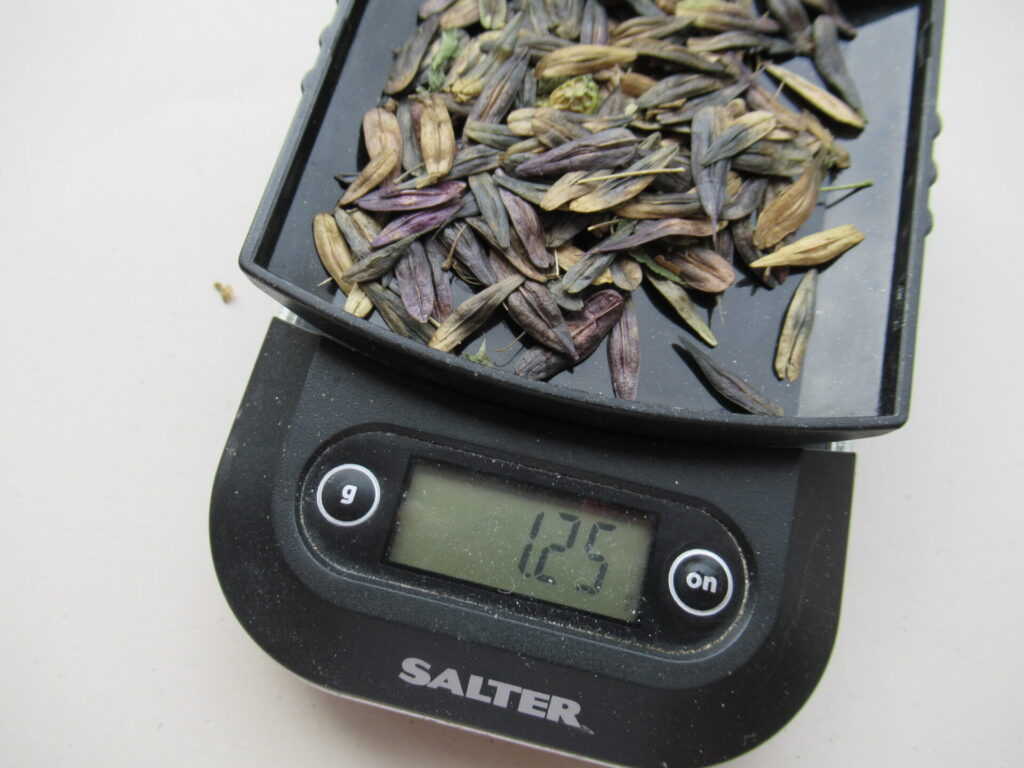
Using only 3 seeds per pot, I have quite a few left. I thought of giving them to a friend, but I’m keeping them for the time being, in case the seeds don’t germinate and I need to try again. I’m hovering over them like an anxious mother hen. Am I using the right kind of soil? Are the seeds still moist? Aren’t they too wet? Are they getting enough sunlight?
I’ll keep you updated about their progress. In the meantime, here are a few links for those of you who’d like to know more.
Links:
- A picture of Eise Eisinga’s woad-dyed wool samples with his handwritten notes can be found here.
- An interesting short video about the wool comber/dyer and astronomer (with English subtitles) can be viewed here. It was filmed in Eise’s beautiful blue living room with his working model of the solar system on the ceiling. (Scroll down to second video. Be patient – it continues after the quote.)
- If you’ve missed the blog post about my humble attempts at rescuing some local wool and about the Wool Rescue Handbook, you can read it here.
